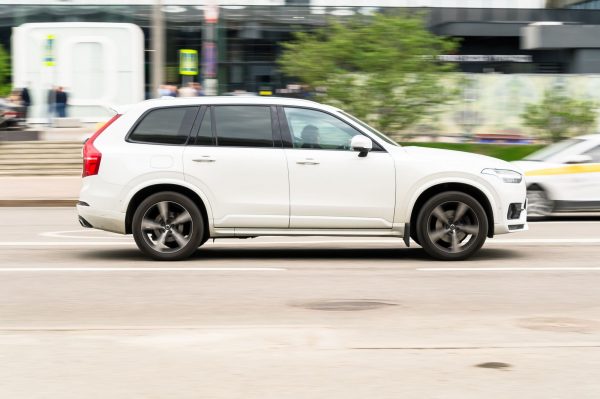What is the difference between AWD, 4WD and 4×4?

The terms ‘four-wheel drive’ (4WD), ‘all-wheel drive’ (AWD) and ‘four by four’ (4×4) are often used to mean the same thing, but there are actually some important distinctions. While you may think you know what each one is, this might not be the case.
So, what is AWD? What’s the difference between AWD and 4WD? Is there a difference between 4×4 and 4WD? We answer all your questions below.
What is 4WD?
Image source: Adobe Stock
A vehicle is considered a four-wheel drive (4WD) when its engine sends power to all four wheels equally. A transfer case uses the vehicle’s two axles to split the power allowing each wheel to move at the same pace. The benefits of 4WD include increased grip, traction and power, making these vehicles perfect for driving off-road or towing heavy loads.
There are two states of 4WD:
4L (four wheel drive, low range) refers to when a low gear ratio is used on all four wheels, usually on softer surfaces such as sand or mud and when driving on steep hills
4H (four wheel drive, high range) offers more traction for driving on firmer grounds such as gravel, dirt road and firmer sand.
It’s worth noting that even if a vehicle has more than four wheels – such as a six-wheel truck – and its engine distributes power to each wheel equally, it will still be considered a 4WD.
Most passenger vehicles are two-wheel drives (2WDs) as the engine only sends power to either the front two or rear two wheels. The other wheels not being powered can spin but do not power movement.
4WDs are typically heavier and more expensive than 2WDs. They can also be less energy efficient, although certain modifications can improve this.

What does 4×4 mean?
A 4×4 system sends power to all wheels equally (known as 4WD) but only applies to cars or trucks that have four wheels. So, while all 4×4 cars are 4WD vehicles, not every 4WD is a 4×4 – a six-wheel truck could be a 4WD but is not a 4×4.
The first four in ‘4×4’ refers to the number of wheels on the vehicle and the second four refers to how many wheels receive power. In contrast, most standard cars are 4×2 as they have four wheels but only two receive power.
Interested in modifying your 4×4? Discover the best mods in our 4×4 modification guide, and make sure you know how this might change your 4×4 insurance costs too.
So, what’s the difference between 4WD and AWD?

The Volvo XC90, an AWD. Image source: Adobe Stock
While the engine in a 4WD vehicle sends power to each four wheels equally, the engine of an AWD can send different levels of power to each wheel. AWDs can distribute the engine power mechanically or electronically, but neither usually require driver action. With most AWDs, one axel is prioritised – the vehicle will generally work as a 2WD and provide additional power to the other axle when required.
There are four types of AWD:
Full-time AWD: when AWD is permanently working on your vehicle – the engine will always be powering each wheel.
Part-time AWD: when a vehicle mainly uses 2WD, but the driver can engage the second axle with the engine, for example in slippery weather conditions.
Automatic AWD: works similarly to part-time AWD, in which the vehicle serves as a 2WD car until conditions require AWD. However, the vehicle will automatically engage AWD, rather than the driver manually changing it. When the wheel starts to slip and the driveshaft rotates faster, a traction control will lock and engage with the other axle, sending torque its way. The vehicle will return to 2WD when the difference in the axle speed stops.
Selectable AWD: gives drivers the option between 2WD and 4WD. Similar to part-time AWD, but can be used for longer.
AWD vs 4WD: which should I drive?
Your lifestyle will greatly impact whether to invest in a 4WD or AWD vehicle. While both 4WD and AWD can provide more torque than a standard 2WD, 4WDs tend to perform better off-road, due to their improved traction and grip, and AWD is often adopted in more urban locations.
4WDs are suited to rugged terrain and severe weather conditions, as the vehicles can offer more pulling power when required. 4WD vehicles can offer some flexibility, with drivers being able to select between 4L and 4H.
AWD vehicles are also well suited for driving in snowy or icy weather. When travelling in these conditions, the surfaces you drive on can change, from gritted road to soft snow, hard snow to ice. If you are driving an AWD or 4×4 in winter, you should know how to maintain your vehicle in those conditions. The flexibility of AWD makes it suitable for adapting to each condition quickly. AWDs could be the ideal car if you live in a colder climate.
If you’re in the market for a 4×4, AWD, or 4WD, read our blog on the best 4x4s you can buy in 2024.
No matter if you choose 4WD or AWD, Adrian Flux offers 4×4 and off-road vehicle insurance policies tailored to meet your needs. We provide the best deals over the phone, so contact 0800 369 8590 to find out more.








